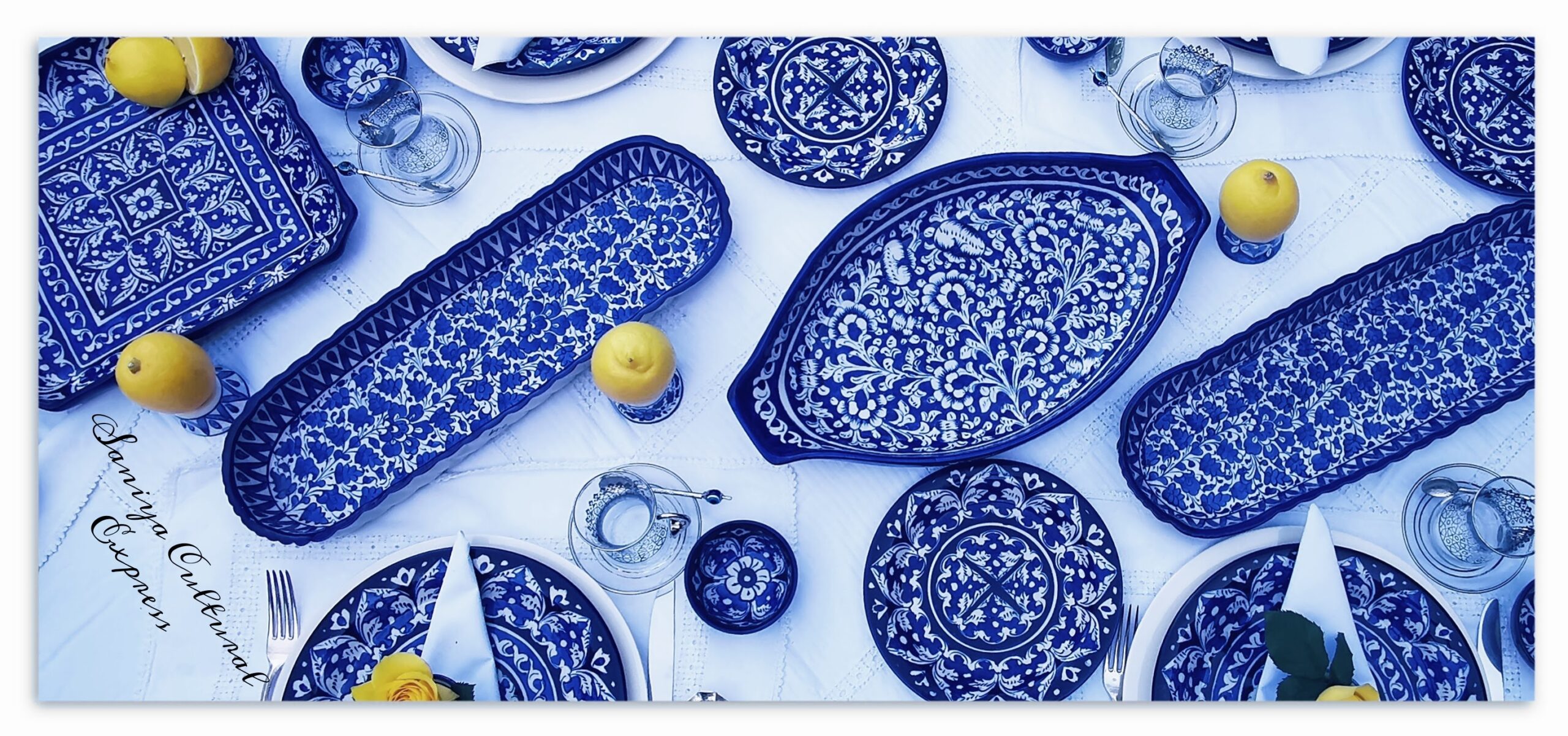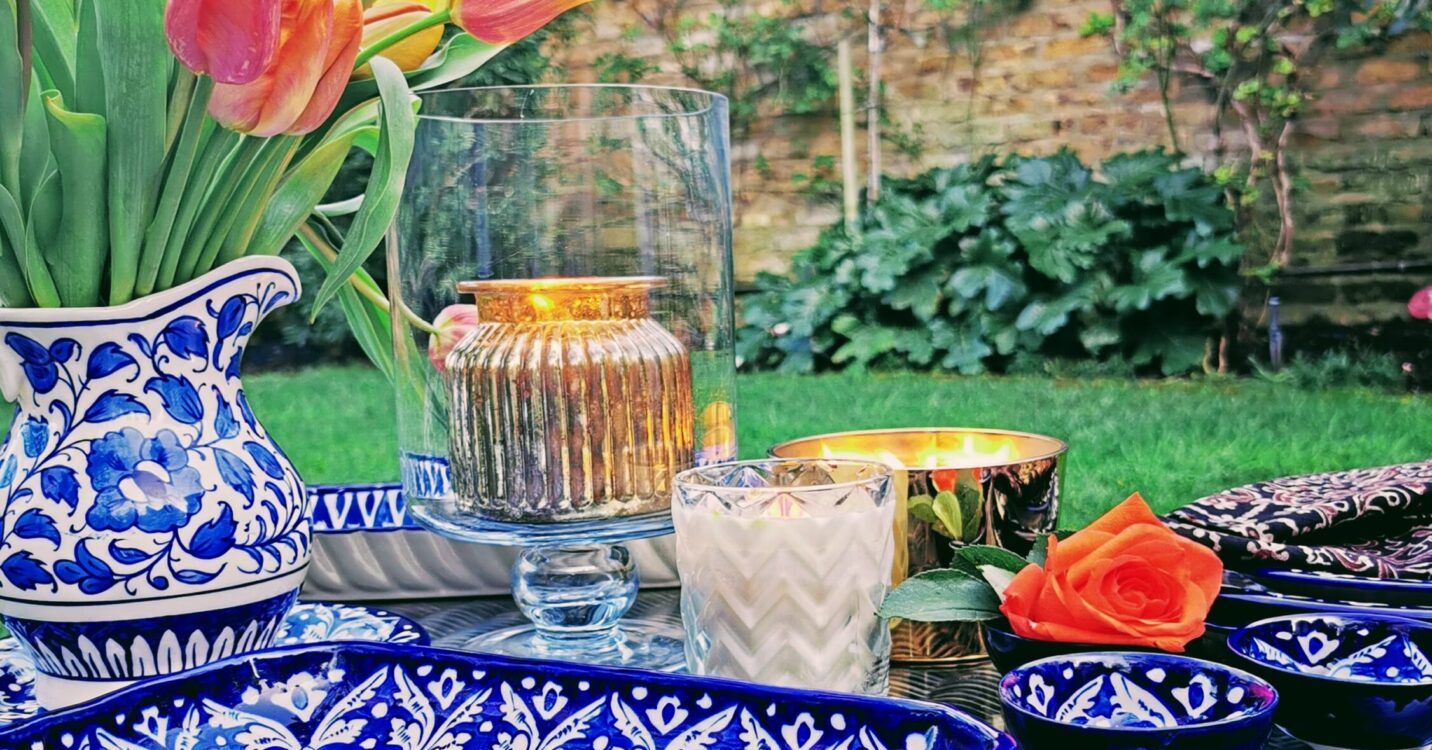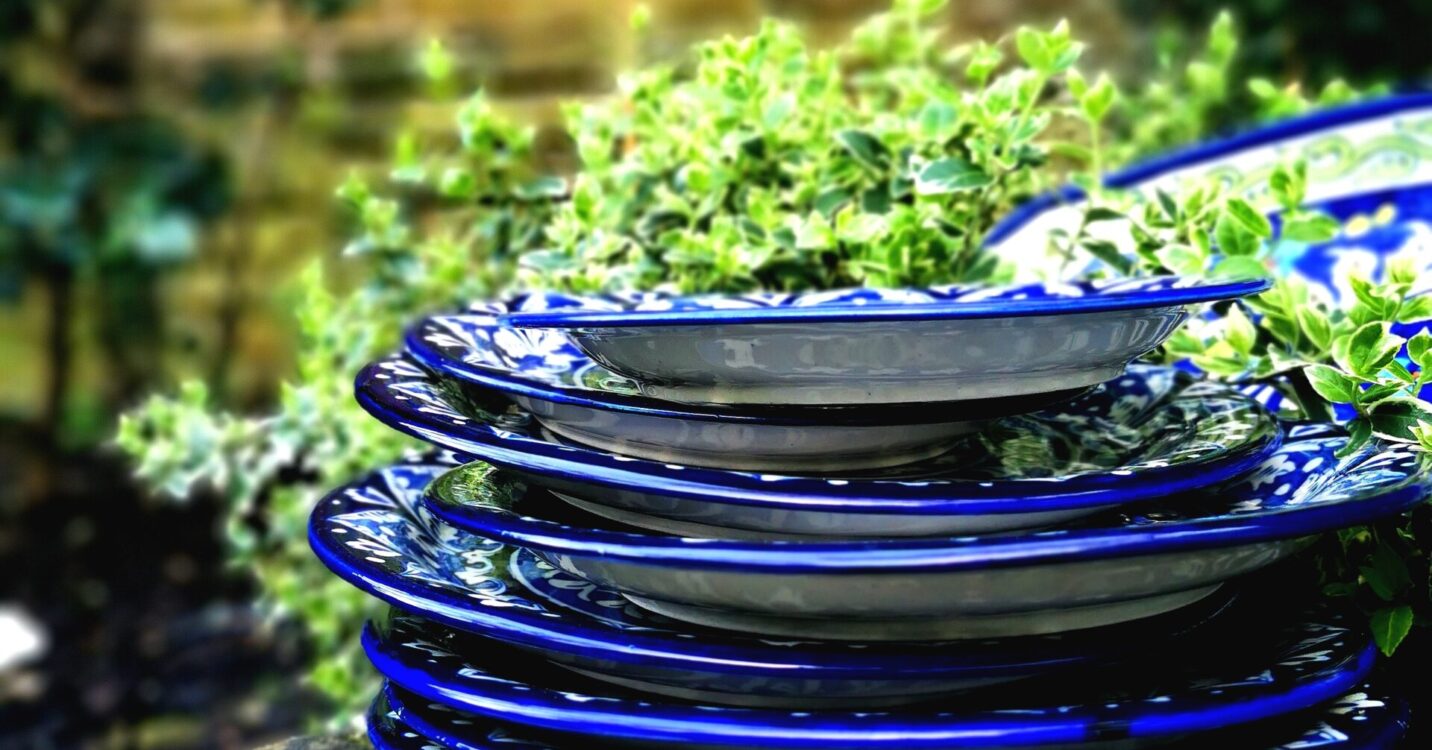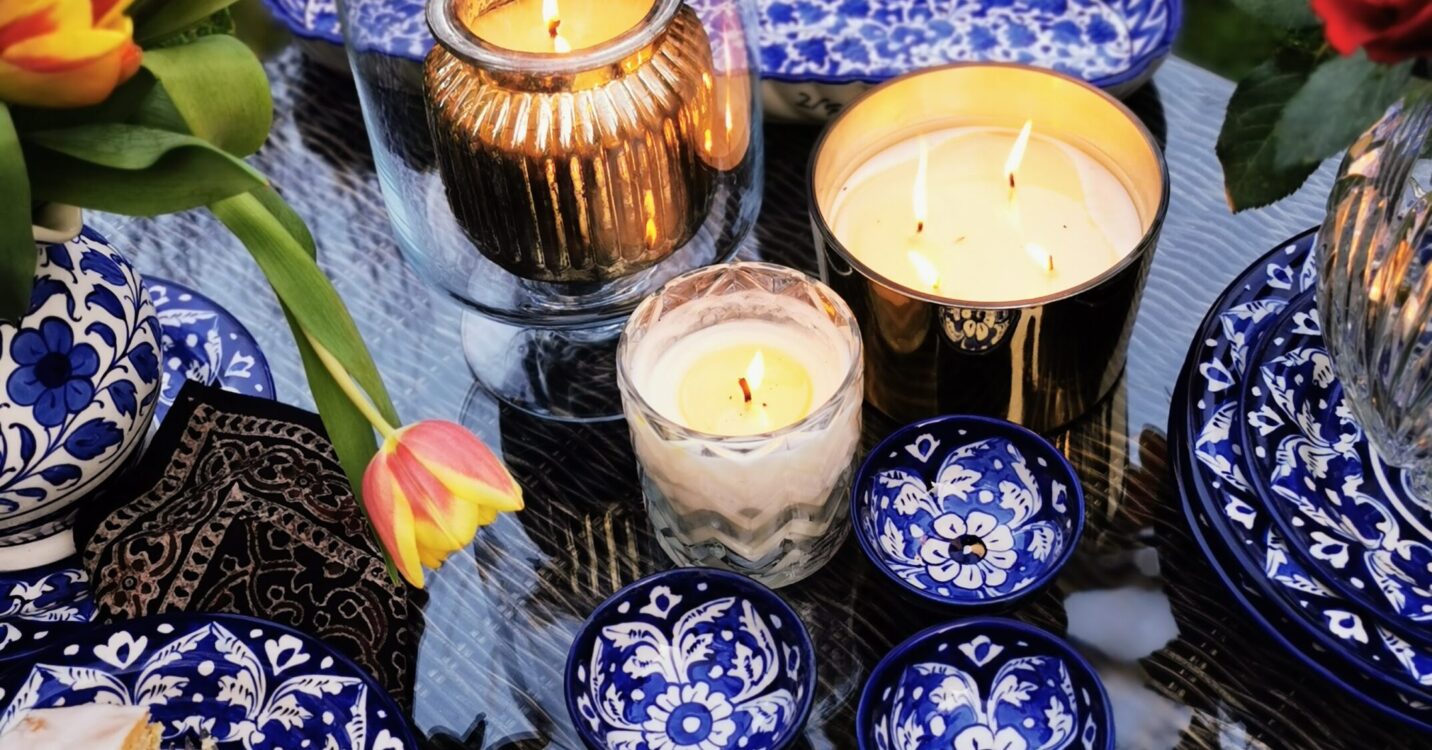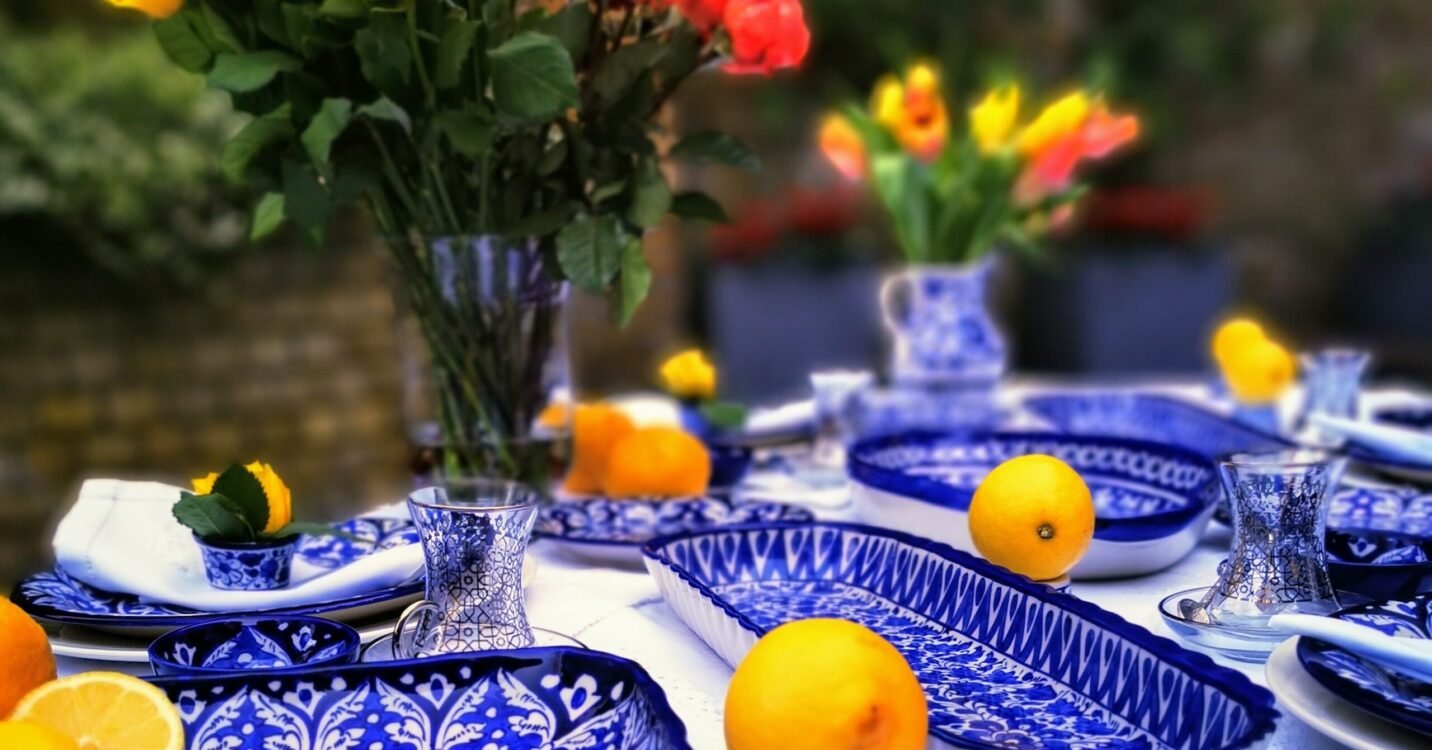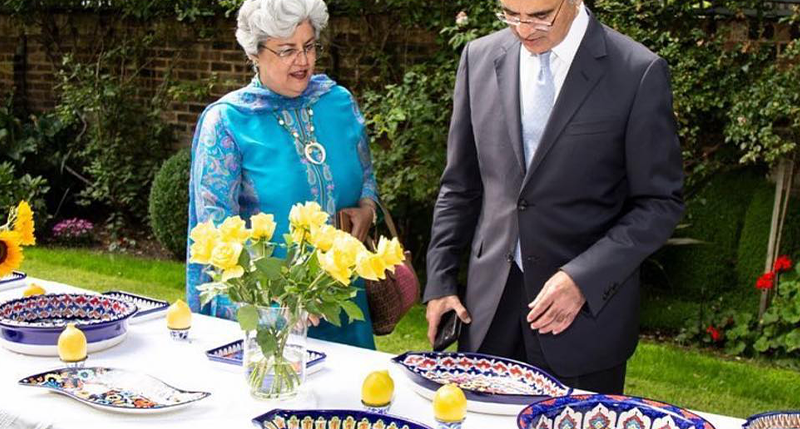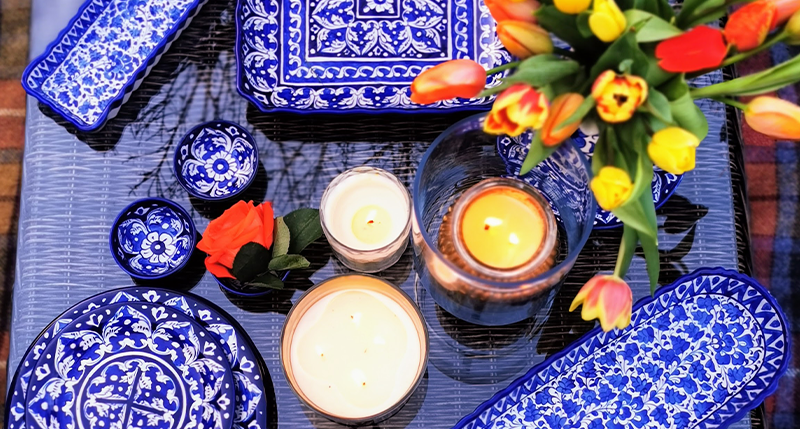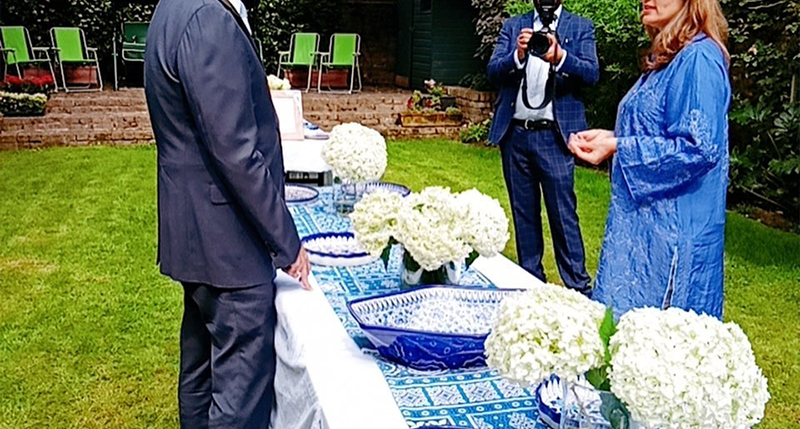Multani Blues
The Ancient City of Saints, Multan is one of the oldest living cities at the crossroads of Central and South Asia spanning over 5 millennia. Its mausoleums, dargahs and masjids are testaments to its key position in the overland trade route between the Islamic world and the subcontinent.
The vibrant blue and white pottery of current day Multan descends from an artistic tradition which produced the exquisite tiles of the Mausoleum of Bahauddin Zakariya and the Tomb of Shah Rukh-e-Alam. The logo for Saniya’s Cultural Express is also inspired by the geometrical pattern engraved on the entrance door of the Shrine of Hazrat Shah Rukh-e-Alam.
Multani pottery is identifiable by its use of floral motifs and geometrical patterns in vivid blues and whites. The hand painted and glazed ceramic work is known as “kashigari” and the artisans are known as “kashigars”. It is believed that kashi work originated in Kashgar, a city in western China and made its way to Multan through Persia in medieval era.
The blue colour prepared from cobalt oxide and copper oxide using a special technique gives kashigari its distinctive look. Trade secrets about colour combinations as well as patterns have been passed down family lines of prominent artisans. Traditionally, red clay from the Indus river was popular in the production of pottery in the region. Today more work is done in ceramics rather than terracotta.
Plates with tiny jharokha decorated rims and floral motifs carry faint echoes of the silk road. Soothing blues and azures in cups and saucers, bowls and urns offer an earthy reminder of a bygone era and a nod to the bustling life and art of present-day Multan.
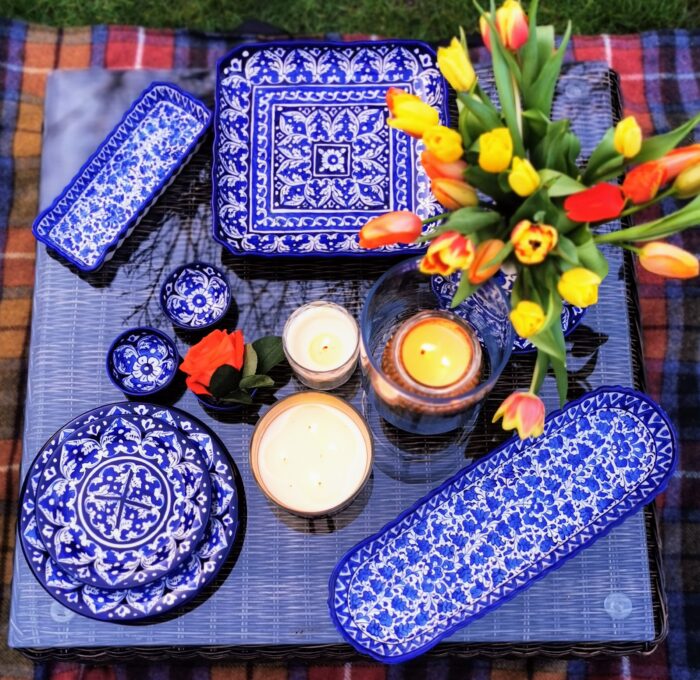

SCE’s Exhibitions
In July 2021, SCE introduced “Multani Blues” which was supported by Pakistan High Commissioner to UK Mr.
Moazzam Ahmed Khan to promote Multani Blue Pottery which is identifiable by its use of floral motifs and
geometrical patterns in vivid blues and whites. The hand painted and glazed ceramic work is known as
“kashigari” and the artisans are known as “kashigars”.


